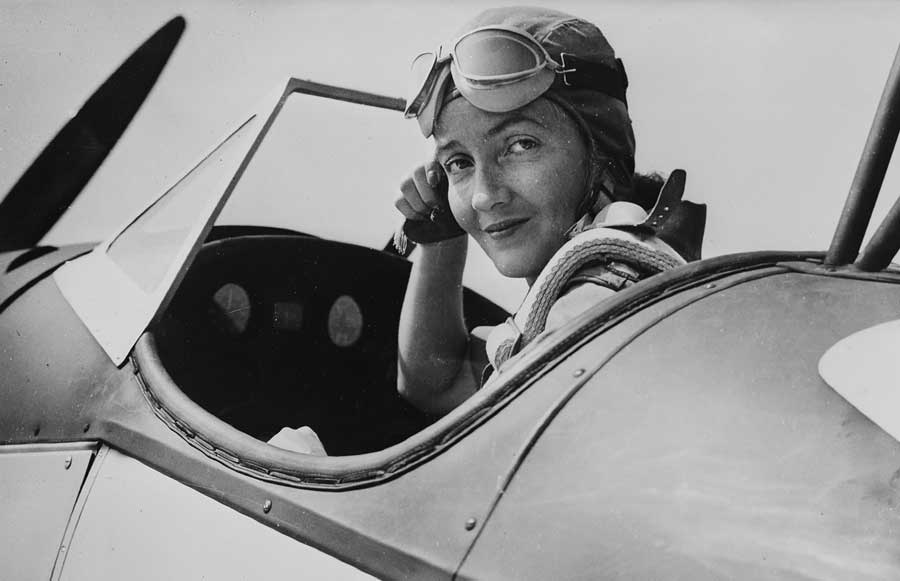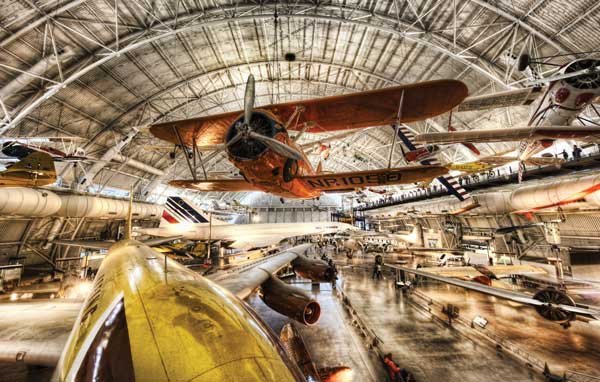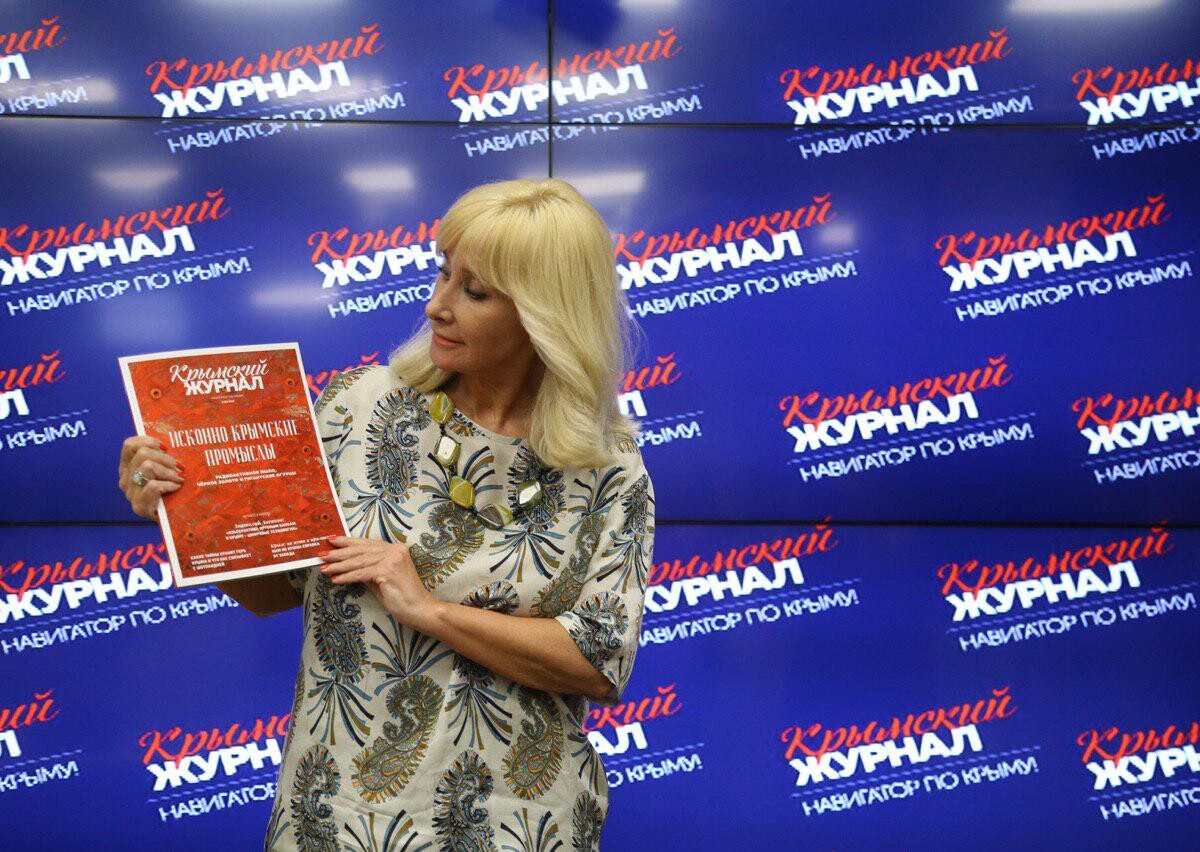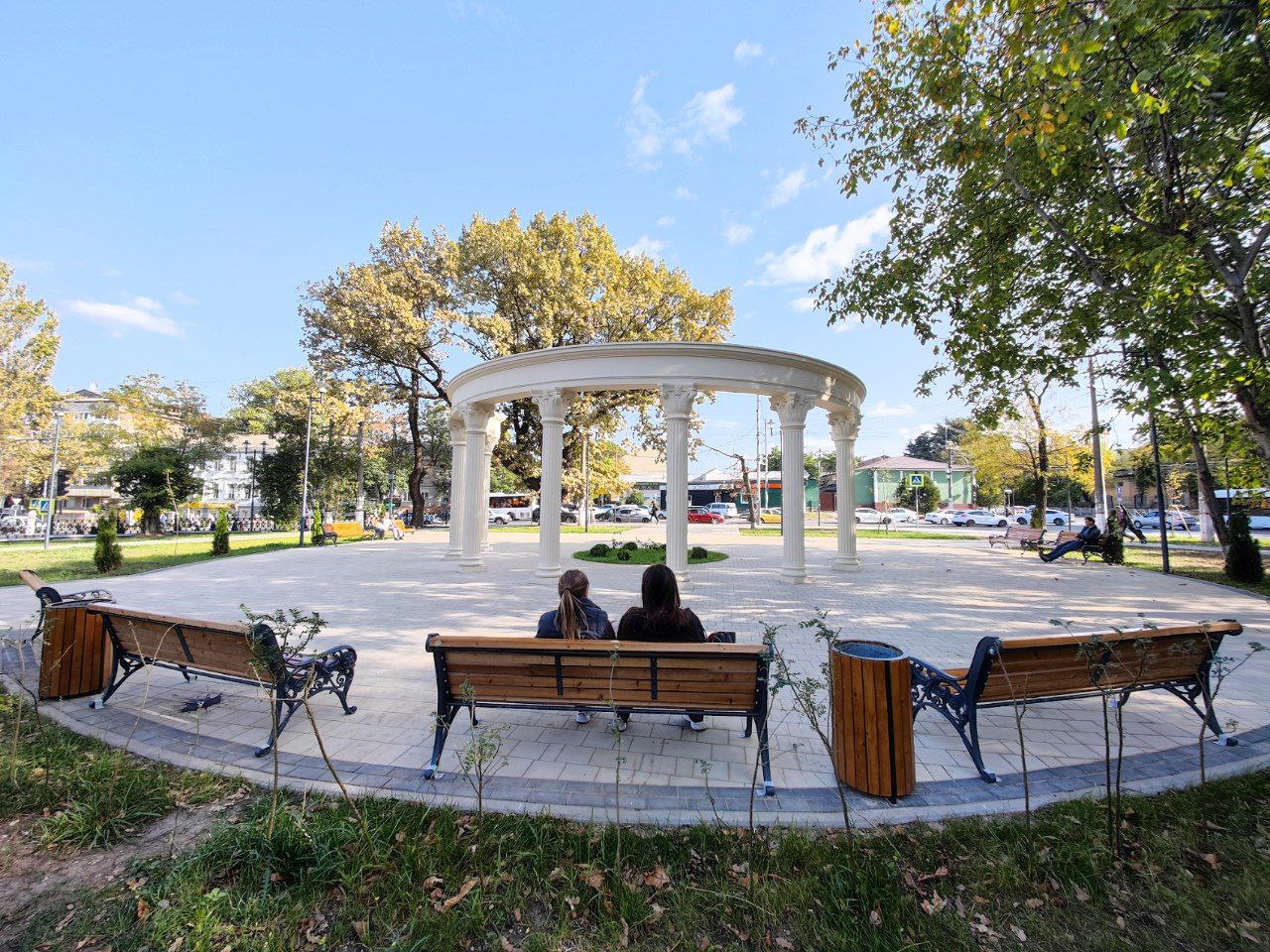Sevastopol is the city of the Russian glory, naval port and fortress, main base of the Black Sea Fleet of Russia, center of naval shipbuilding and repairing, also became a center of development of the Russian aviation at the beginning of the ХХth century. In the autumn of 1910, a plane took off above the peninsula for the first time and the first military pilot school of Russia was opened in Sevastopol. One year later, Nicholas II personally congratulated the first graduates of the pilot school.
Hybrid of pterodactyl and dragonfly
It all started with the emergence of an aero club in Sevastopol. In the early ХХth century, the “air ambience” prevailed in Russia: having merged into aero clubs, enthusiasts were mastering the new natural element. The aero club was established in Sevastopol in Crimea too. The first airplane was decided to be bought in France. The right to choose an aircraft was given to the lieutenant Stanislav Dorozhinsky, as he had experience of flights on aerostats, excellent education and knew the French language perfectly. Dorozhinsky went abroad and opted for the “Antoinette IV” plane, though the reviews on that aerial device were contradictory: “Its construction is very unsuccessful, but the airplane’s silhouette is very elegant, it looks like a dragonfly or some kind pterodactyl on the flight”.
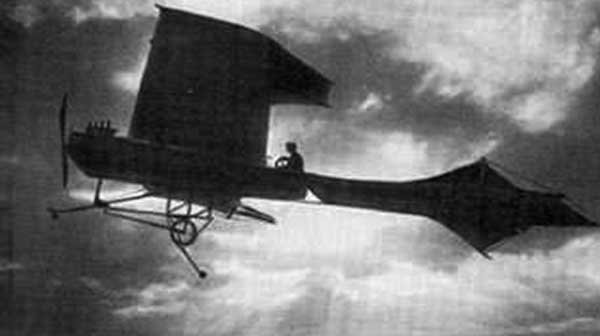
The “Antoinette IV” airplane was delivered to Sevastopol in September 1910. Dorozhinsky obtained a diploma of an aviator-pilot in France — after arriving back in Crimea, he was the first Russian officer, who had finished a private aviation school. His first “Antoinette” flight took place on 29 September 1910. To rise the plane up in the sky, the aviator had to undertake Herculean efforts. That day, Dorozhinsky wrote in his “Diary of activities and practical exercises at the aviation ground in Sevastopol”: “The adjustment of the engine was started at 5:00 a.m. The engine was running and gave 1200 revolutions per minute at 6:00 a.m., but the full stroke wasn’t reached. The engine had been adjusted a little bit better by 7:00 a.m. It’s 7:15 a.m., but we face only with vain efforts while trying to take the flying machine up in the air during 10 minutes. At 7:25 a.m., having wandered to the farthest angle, I opened the full throttle and reached the speed of 70 versts per hour; the airplane took off rapidly and having risen up to 50 meters, I’ve made two full circles over the field and smoothly landed on the place I took off”. Afterwards, Dorozhinsky performed several flights even with passengers (it was a two-seater airplane), but every time he tried to take this hybrid of pterodactyl and dragonfly to the air, it was not so easy.
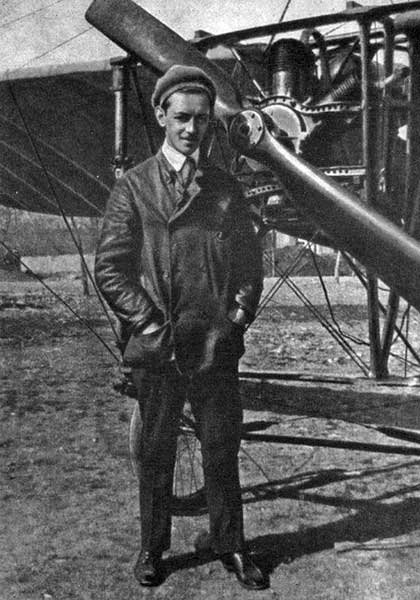
Eight aircrafts, thirty air cadets
In his autobiographical “Book of memories” the great prince wrote: “One morning I was looking through newspapers and I saw the headlines telling me about the Bleriot’s successful flight over the English Channel. Being a fan of heavier-than-air aircrafts since the time, when Santos-Dumont, who rounded the Eiffel Tower, I have realized that the achievement of Bleriot provided us not only with a new way of traveling, but also a new type of weapons in the case of war. I have immediately decided to get down to work and set airplanes into operation for the Russian military air forces. I still have got two million of roubles that had been collected previously thanks to the national assistance for the building of torpedo cruisers after the destruction of our fleet during the Russo-Japanese War. I came to Paris and concluded a trade agreement with Bleriot and Voisin. They pledged themselves to provide us with airplanes and instructors. As for me, my duty was to rent an airdrome, find air cadets and facilitate them in all moments, as well as provide the cadets with funds”.
Notwithstanding the skepticism about airplanes on the part of the military establishment, Alexander Mikhailovich got the approval of Nicholas II to establish a pilot school. It was situated in Sevastopol. A wooden hangar and three portable canvas hangars for aircrafts were raised at the Lagernoye Field (aka Kulikovo). Primarily, the aircraft fleet of the pilot school consisted of eight airplanes. By the end of 1911, the pilot school possessed 38 planes, which needed more space both within the airdrome and air — the school was shifted to the northward of Sevastopol in the area of Kacha River and renamed Kachinskaya.
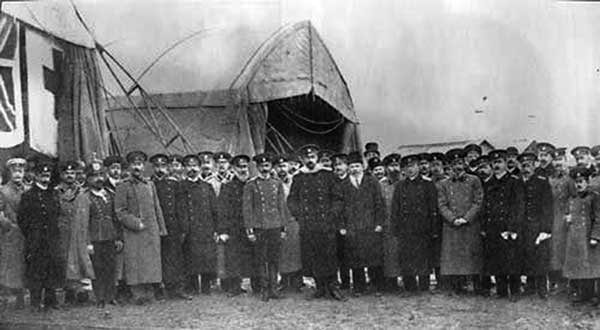
The aviation school in Kacha had its own aviation workshops, brick hangars for planes and large field airdrome. Annually, about 150-200 pilots were trained at the aviation school. The first group of the aviation school consisted of 30 cadets. That graduating class was on 26 October 1911 — Nicholas II personally hosted the first graduates at the Livadia Palace. The emperor told the great prince: “You were right, forgive me for my trustless view to your idea”.
In 1912, the metropolitan magazine “Motorcar and air navigation” noted: “The aviation school of the Air Fleet Department became the center of all the military air forces of Russia”. The total number of the military staff of the school, amounted to 18 officers and 20 lower ranks in 1910, increased up to 102 officers and 200 lower ranks by April 1912.
The correctness of the deed of Alexander Mikhailovich was proved by the World War I — Russia had trained about 250 military pilots by the beginning of the war. So, the Russian government had established 12 aviation schools by the war’s end, though the Sevastopol aviation school in Kacha remained the main military pilot educational institution, where 609 officers learned piloting aircrafts produced by such companies as “Farman”, “Nieuport” and “Bleriot”. Besides of it, 233 soldiers obtained pilot ranks.
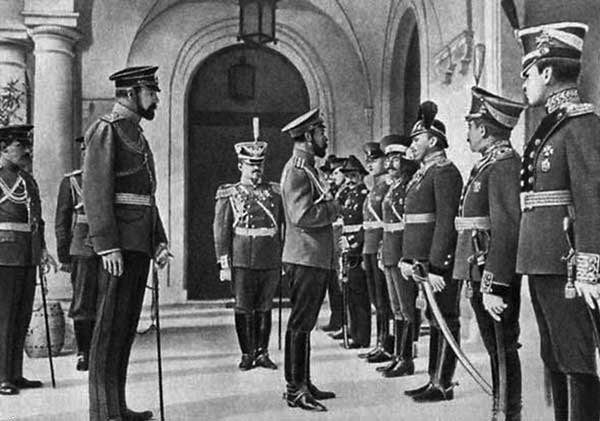
The post-revolutionary events became another particular evidence of the great prince’s rightness. In November 1917, the representatives of the Council of Sevastopol hid him and his relatives at the Dulber Palace and protected them from the anarchists of the Council of Yalta during five months until their departure for the emigration. The plausible explanation of this behavior is that there were many graduates of the Kacha Aviation School among the residents of Sevastopol, who hid the prince.
Broken doll
Early on, many people reacted incredulously to the aviation — how can heavier-than-air aircrafts fly? Skeptics supposed that all aviators were suiciders and the Bone Grim Reaper was the invisible passenger of airplanes navigated by those pilots.
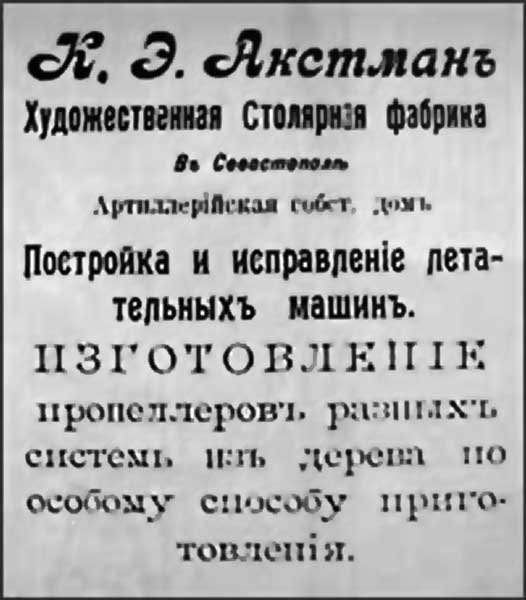
Unfortunately, the conquest of the skies wasn’t achieved without casualties. The death of the brothers Matyyevich-Matseyevich was the first such-like tragedy and that sad primacy was related to the Sevastopol Military Aviation School too. On 18 April 1911, Bronislav Matyyevich-Matseyevich, who was one of the best instructors of the Military Aviation School in Sevastopol, decided to give his younger brother Stanislav, who came from Saint Petersburg, a ride on the airplane “Bleriot”.

Before the flight (it was planned for the evening), Matyyevich Sr. was having supper in the family. When everybody was drinking tea, the toy airplane with the aviator doll inside of it got fell down and broken — that was a gift of Bronislav Vitoldovich to his daughter. The girl was very upset, but her father was tried to comfort her by saying that when aviators crashed, people took pity on them and as for the doll, it wasn’t needed to take pity on it and he would buy a new one the next day. Having seen a bad sign in that event, the wife tried to dissuade the husband from the flight. The entreaties didn’t help and Matyyevich came to the aerial field. In an hour, the woman was told that her husband died. When the airplane was about to land, the harsh wind blew then and the airplane was turned around vertically to the ground and from the height of 50 meters, its nose crashed into the stone wall of one of the city villages. The airplane together with the aviator and his brother smashed into smithereens. That was not the only tragedy: one third of 35 Russian aviators died for four years (from October 1910 to August 1914) were graduates of the Aviation School of Sevastopol.

Aircraft manufacturing… at the woodworking factory
The first Crimean-made airplanes were manufactured in Sevastopol — at the Axtman’s woodworking factory. You shouldn’t be surprised at such a weird “place”: major aircraft parts were produced of wood at that time, thus some aircraft-building plants were established on the base of furniture and woodworking factories.
At the beginning, the aviation orders coming to Axtman were related to the “adjustment of aerial machines”: the first airplane was repaired here in August 1910. When the aviation school was opened and orders started pouring one after another, wooden propellers and other aircraft part were manufactured at the factory. It was exactly the Axtman’s factory, where wooden floats were produced and which the airplane “Antoinette” was tried to be mounted on what would allow it to take off from water (to tell the truth, that seaplane manufacture attempt was unsuccessful). Soon, Axtman moved from repairing to airplane building. Two planes were built on the individual orders in 1911: following the models of “Farman-IV” and “Bleriot-XI”. Herewith, Axtman not just cloned foreign models, but he also made some rational alterations in their construction. The manufacturer from Sevastopol even designed his personal plane — “airplane-parachute”. In an emergency situation at this plane, a pilot could discard the fuselage with an engine and propeller and parachute to the ground while being hung under the wing. Axtman patented his project in November 1911, then two samples of “airplane-parachute” machines were started to build at his factory, but none of them was finished. As for the factory, it couldn’t turn into a full-fledged plant for quite unclear reasons.
Mastering the spin
The legendary Russian pilot Konstantin Artseulov worked as an instructor at the air club in Sevastopol in 1912. In September 1916, a 25th years old warrant officer was withdrawn from the front line to establish a fighter aviation squad in Kacha. By that time, Artseulov had many episodes of experience in testing of planes and engaging in active combats (he flew 210 combat missions, participated in more than twenty air battles). When he was on the front line, he had an aspiration to learn to recover an airplane from a lethal, as it was believed then, spin: six of eight airplanes “Farman-40” received by the Aviation School in Kacha had crashed by that time after going into a spin and herewith, all pilots of those flying machines died.
On 26 September 1916, for the first time in the history of the Russian aviation Artseulov purposely put the airplane into the spin and recover it from the spin above the territory of the Kacha Aviation School — he did it twice at an altitude of 2000 meters! Having studied the experience of Artseulov, within a week all the instructors of the school purposely started to put their planes into the spin and put the flying machines out of the spin, and already in October, mastering of the spin was included in the educational program of the fighter aviation squad of the Aviation School in Kacha. The guidelines on recovering airplanes from the spin developed by Artseulov were sent to all aviation units of the Russian army. Very soon, Russian military pilots began using the spin as the aerobatic maneuver in air battles. When Russian pilots came under fire of the enemy, they purposely put their aircrafts into the spin. Thinking that the plane was shot down, the enemy ceased firing. In the meantime, Russian aviators were recovering their aircrafts from the spin and leaving engagements zones.
As the Nesterov’s Loop, mastering of the spin joined the list of historical events of the national aviation forever. By the way, Nesterov visited the Kacha Aviation School too. He arrived there in March during the the route Kiev — Odessa — Sevastopol. He was welcomed as a hero at the airdrome in Kacha: every inter-city flight became a sensation at the dawn of aviation and it is the same definitely when we talk about the author of the loop-the-loop. On 19 March 1914, the message that Nesterov had already landed in Odessa and he had to go on a flight with a landing in Kacha was transmitted over the radio to the Aviation School in Sevastopol. To show pilots the landing zones, two huge bonfires had been made at the airdrome in Kacha by 07:00 p.m. Nesterov landed in an hour. It was found out that the pilot couldn’t reach Kacha without stops — the fuel almost ran out and the pilot had to land to refill the airplane’s tank in Perekop. Nesterov spent two days in Kacha: he talked to the instructors of the aviation school, attended the ceremonial dinner in his honor and of course, he demonstrated his pilot skills through showing aerobatic maneuvers on his Nieuport plane.
“School” biography
In the 1920’s, the Aviation School in Kacha was transformed into the 1st Aviation School of the Red Army, which the 1st Moscow School of Military Pilots of the Red Air Fleet (the former aviation school in Gatchina) was included in. Thereby, two oldest aviation schools of Russia merged with each other. The aviation school was called the “Kacha Aviation Red Banner order of School of Pilots named for A.F.Myasnikov” in 1938. With the outbreak of the Great Patriotic War in 1941, the school was relocated to Krasny Kut of Saratov Region, where pilots were trained for the front line. The school became an academy and it was relocated to Stalingrad.
The Kacha Aviation Academy was preserved in Volgograd after the war and functioned until 1997. The “Kacha Higher Military Aviation twice Red Banner order of Lenin School of Pilots named for A.F.Myasnikov” was disbanded on 1 November 1998.
Reference: Crimean Magazine

